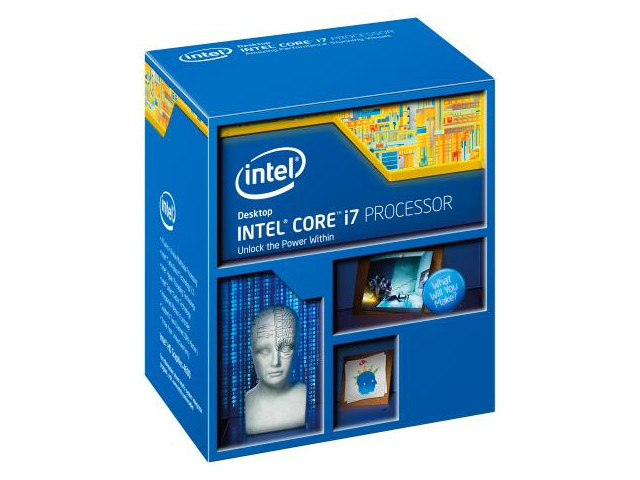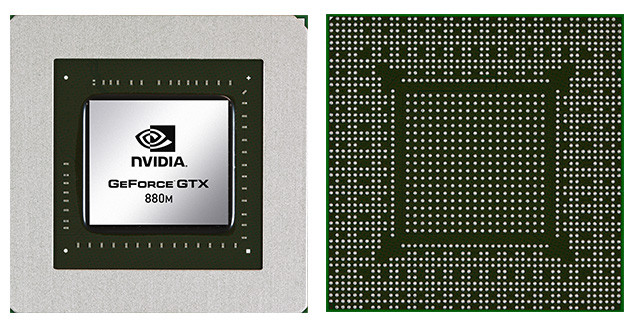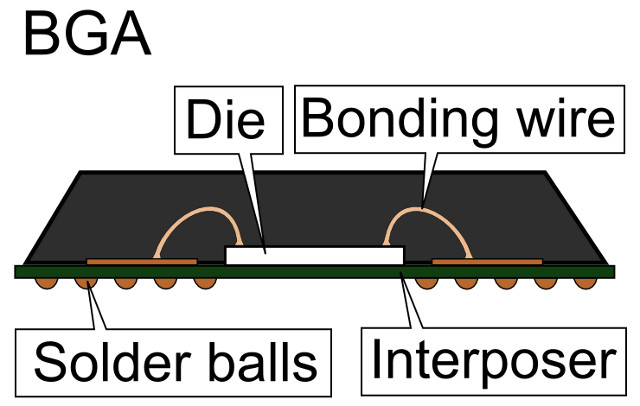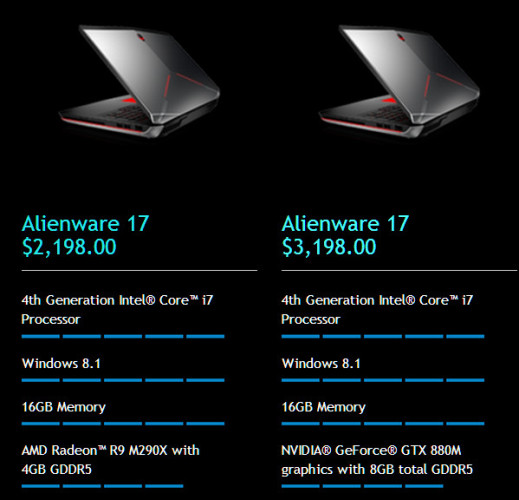

Most gamers know that large PCs tend to be faster than small ones. Quicker chips require more power, generate more heat, and have more transistors, all of which adds up to more space. Very few people believe, even for a second, that a laptop can outrun an equally expensive desktop built in the same year.
Yet many gamers still struggle when choosing between the two. The fact that laptops are slower than desktops is common knowledge, but how much slower can be hard to quantify, and many gamers find themselves weighing the reduction in performance against the price tag and the portability a notebook provides. Here’s what you need to know to make an informed decision between the two.
Modern computer processors are rarely the limiting factor in video game performance. Important mechanics like the physics engine and artificial intelligence run on the CPU, but the load they place on hardware is trivial compared to 3D graphics. Still, the CPU does contribute to the speed of all software, and it can in rare occasions be important. The strategy game Civilization V, for example, runs poorly on slow dual-core processors.

You might expect to see a big difference in performance between mobile and desktop parts, but the two are rather similar. Intel’s Core i5-4590, a mid-range quad-core desktop component, reaches an aggregate performance score of 80 in the SiSoft Sandra Processor Arithmetic benchmark. Intel’s Core-i7 4700HQ, an entry-level mobile quad, scores identically in the same test. A faster desktop quad-core like the 4770K can score as high as 125, but the Core i7-4800MQ mobile quad can hit 115. Dual-core processors tell a similar story. The Core i3-4130 desktop dual-core scores 55 in the Arithmetic test while Core i5 mobile dual-cores usually score in the low 40s.
There are, of course, some desktop parts that completely destroy notebooks, but these are exotic options like the recently released 5960X Extreme Edition processor. That chip is priced at $999 for the processor alone, so you’ll probably end up with something less expensive in your rig. The desktop processors most people actually buy are a bit quicker than their mobile peers, but it’s not the crushing victory you’d expect.
High-end graphics chips are a real challenge for notebooks to handle. They consume far more power than an Intel processor and require a beefy cooling system to stay operational. This is the reason why gaming notebooks tend to be larger and heavier than standard models.

Mobile GPUs constantly trail their desktop peers. The recently released Nvidia GTX 880M, for example, scores around 6,000 in the 3DMark Fire Strike benchmark. That’s about eight times better than Intel HD 4600 on board graphics, but it’s nowhere near as quick as the GTX 780 Ti desktop video card, which usually hits a score of 9,000 or better in the same benchmark. Even the GTX 770 desktop video card is quicker, as it typically scores around 6,500.
With that said, though, the desktop’s margin of victory is narrower when budget video cards are considered. The affordable Nvidia GT 650 scores about 2,000 in Fire Strike while the GT 750M scores 1,700 when paired with GDDR5 memory (some versions have slower GDDR3 VRAM). The desktop video card still wins, but the notebook chip is quick enough to run games at the same detail settings with only a minor performance disadvantage.
Benchmark numbers are useful, but they don’t tell the whole story. Performance in real games is key, and when approached from a practical perspective, laptops prove surprisingly capable.
Consider the Alienware 17. When configured with a GTX 880M this notebook can play Battlefield 4 at an average of 44 frames per second with detail set to ultra and resolution set to 1080p. That’s not bad, though a quad-core desktop with a GTX 780 Ti can easily exceed an average of 60 FPS at same detail settings, and ends up providing a noticeably smoother experience. Most gamers will prefer the desktop, but the laptop experience is far from awful.

But let’s say you don’t play Battlefield 4 and instead enjoy games that are less demanding, like League of Legends. A measly GT 750M can play that game at greater than 60 FPS with detail set to maximum and resolution set to 1080p, and the GTX 880M can exceed 130 FPS at maximum detail. A high-end desktop can double that pace, but does it matter? Not to most players.
In short, the hardware you need will be determined by the games you play, and that in turn should inform your decision between a desktop or a laptop. Gamers seeking to play the most demanding and attractive action titles will find a laptop to be noticeably slower than a similar desktop, but games with technically simplistic graphics can be tackled by either with ease.
Desktops and laptops differ in how they can be upgraded. The former, with a few rare exceptions, allows every component to be removed and replaced with new hardware. In theory you can buy a desktop and still be gaming on it a decade from now, albeit with most hardware replaced.
Laptops, by contrast, have many limitations. Most have a processor that uses ball grid array packaging. In this configuration the processor is soldered to the motherboard and can’t be removed. The same approach is used by many graphics chips. Some PC builders even solder the RAM and use non-standard solid state drives, though the majority of gaming notebooks still allow easy upgrades for these components.

Limited upgradability is an issue notebook buyers must keep in mind. Hardware ages rapidly; the GTX 480M was a top mobile graphics chip in 2011, but today it can barely keep up the GT 750M, which itself is nearly a year old. A laptop gamer who finds her once proud rig can’t handle the latest games must throw away the entire system and start from scratch with a newer model.
Laptops built for gaming tend to be more expensive than desktops; that’s common knowledge. But by how much?
Quite a lot, as it turns out. An Alienware 17 with a GTX 880M graphics card, for example, is about $3,000. That’s a lot of money, and it looks like even more when compared to Alienware’s own Aurora desktop, which can be purchased with a quicker GTX 780 graphics card for around $2,300. In other words, going with the desktop lets you buy a system that’s noticeably quicker for $700 less.

The laptop argument is even worse if building your own desktop is an option. A computer similar to the Aurora can be put together for around $1,500, half the price of the Alienware 17 notebook. You could literally build two desktops for the price of the notebook, and the desktops would prove quicker.
Obviously, pricing varies; there are some GTX 880M notebooks available for less than the Alienware 17 and there are many desktops available for less than the Aurora. But regardless of brand, it remains true that a desktop can be had for at least several hundred less than a somewhat equivalent notebook. The gap tends to grow as you consider more capable hardware; a $800 desktop gaming rig is marginally quicker than a $800 gaming notebook, but a $3,000 desktop is far more powerful than an equally expensive laptop.
Desktops are quicker than laptops. The two are closer than you might imagine in the arena of processor performance, but desktops enjoy a major advantage in graphics, which is what really matters for gaming. You’re also going to pay more for a gaming laptop than a desktop and, once the laptop is obsolete, your upgrade options are limited.
All of this makes gaming laptops look a bit silly. Remember, though, that the performance you need depends on the games you play. Hardcore gaming and cutting-edge hardware no longer go hand-in-hand; just ask the pro gamers who make money playing League of Legends and Starcraft 2. You’ll receive better value from a desktop, but gaming laptops are capable and can be a valid choice if you believe portability is essential.
What do you think about this debate? Does the desktop’s power make it the better choice, or does the laptop’s portability outweigh its negatives? Have your say in the comments!
Image Credit: Wikimedia/Tosaka




 How to unlock Characters and Stages in Super Smash Bros. for Nintendo Wii U
How to unlock Characters and Stages in Super Smash Bros. for Nintendo Wii U Yakuza 4 Trophies List
Yakuza 4 Trophies List 5 DIY Home Decor Tips With LED Strips and Smart Lights
5 DIY Home Decor Tips With LED Strips and Smart Lights Fallout 4 Mission Guide: Call to Arms
Fallout 4 Mission Guide: Call to Arms Bulletstorm Guide
Bulletstorm Guide